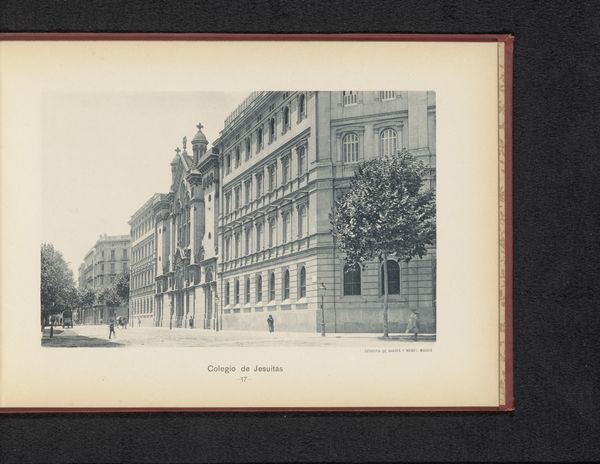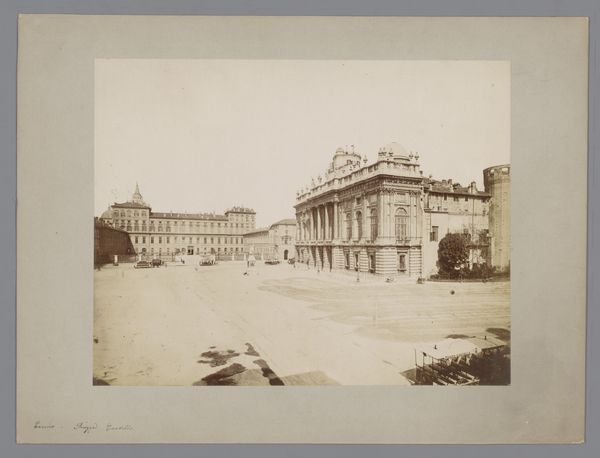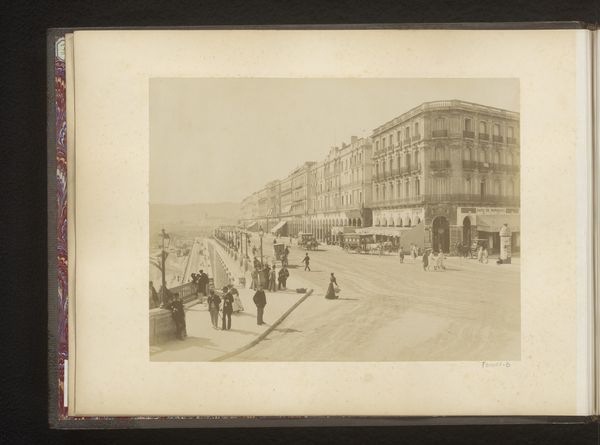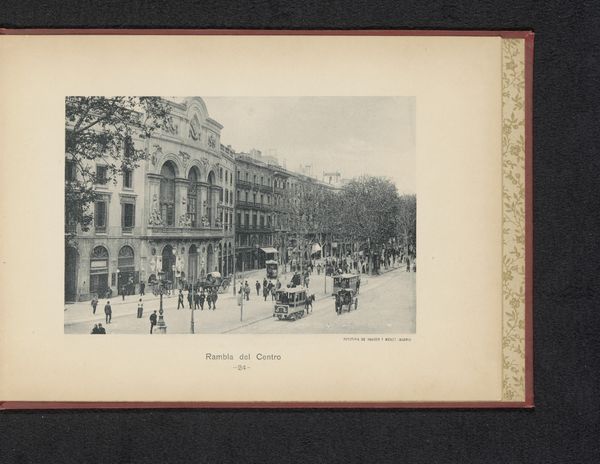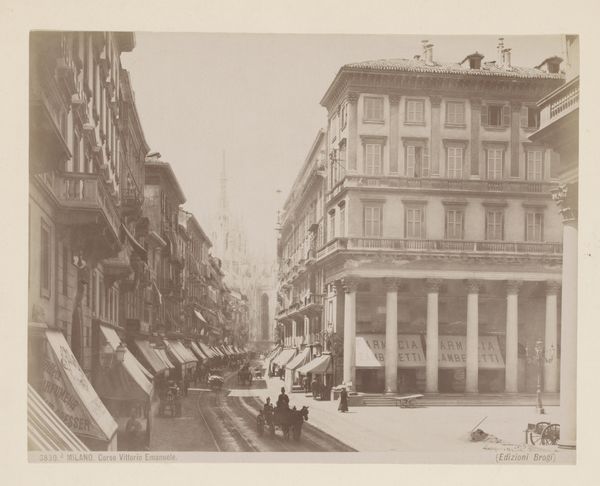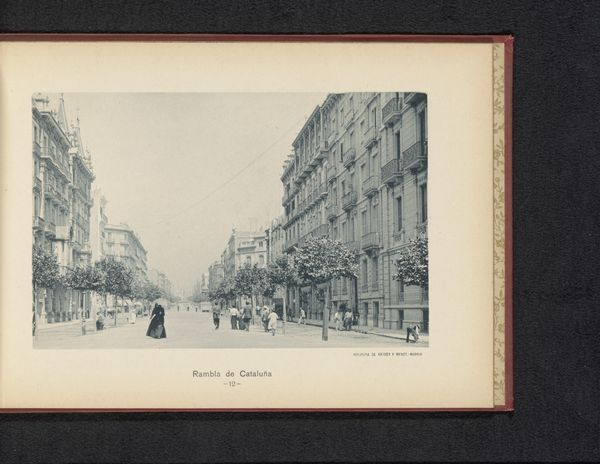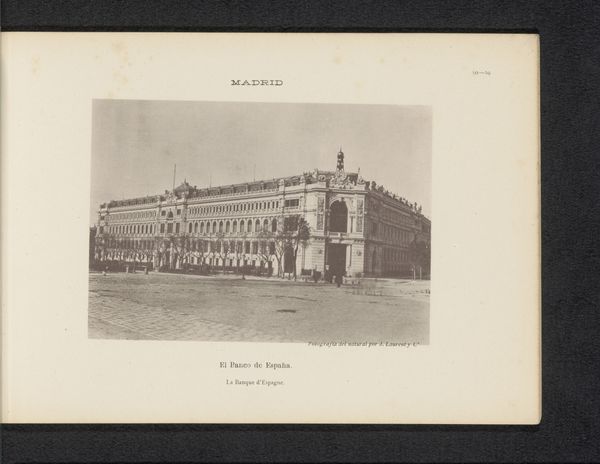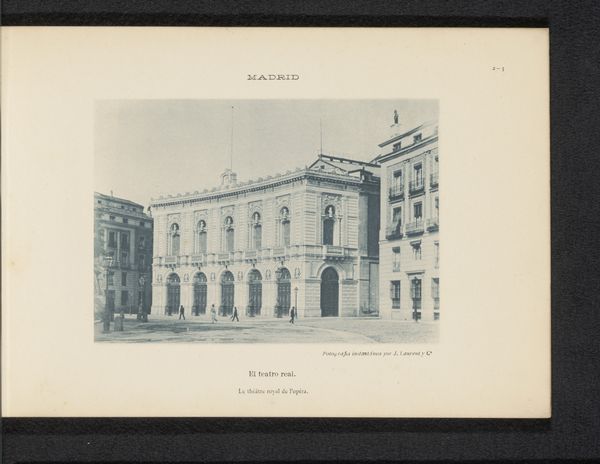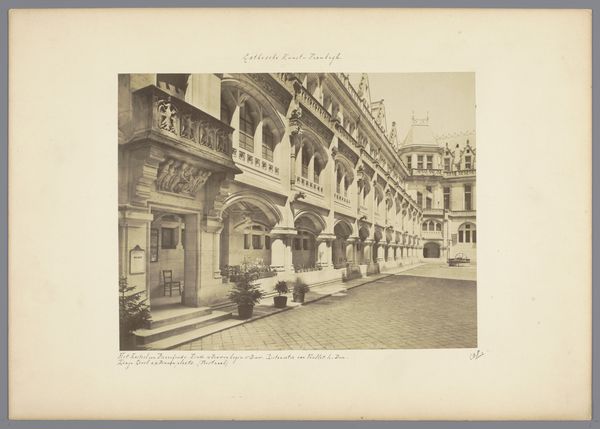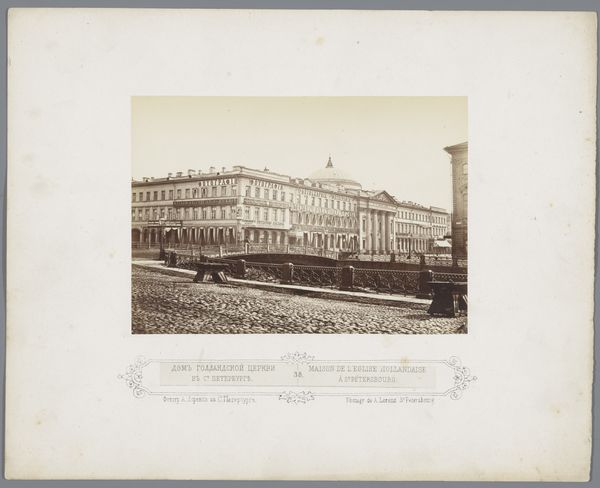
Dimensions: height 108 mm, width 164 mm
Copyright: Rijks Museum: Open Domain
Editor: This is "Gezicht op de Rue de Rivoli te Parijs," taken sometime between 1860 and 1890, and identified as an albumen print. The way the people and carriages blur really gives you a sense of motion despite it being a still image. What stands out to you about it? Curator: The ethereal quality, definitely. Note how the photographer captures a sense of transition, not just of place, but also of time. The long exposure transforms people into spectral figures. What do those ghostly apparitions suggest to you about our perception of city life then, and perhaps even now? Editor: I guess it suggests how fleeting experiences are, how we’re all just passing through. The architecture feels so permanent, but the people are just momentary. Curator: Precisely. And the Rue de Rivoli itself, meticulously planned, becomes a stage for these fleeting human dramas. The row of lanterns mirroring the architectural lines could represent an effort to impose order, but do they truly contain the ephemeral human spirit? Also, think about what photography *meant* at the time – a way to stop time and preserve a moment. But here, the artist uses its properties to show transience. A paradox! Editor: That makes me think about how even now, with so many photos being taken every second, the best ones still capture something deeper, some feeling that sticks with you. It’s not just about freezing the moment. Curator: Exactly. The material processes create layers of meaning, speaking volumes about how we use imagery to give sense to our shared cultural memory. Editor: That gives me a lot to consider about not only the image itself but the impact it leaves on us as viewers! Thanks.
Comments
No comments
Be the first to comment and join the conversation on the ultimate creative platform.


